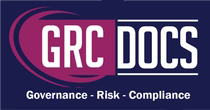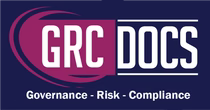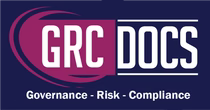SOC 2 Evidence Spreadsheet Essential Elements For Compliance
Introduction
In today's digital landscape, maintaining trust with your customers is paramount. One of the most effective ways to build this trust is by ensuring your organization complies with SOC 2 standards. SOC 2, or Service Organization Control 2, is a framework that evaluates how well a company protects customer data, ensuring privacy and security. A crucial part of achieving SOC 2 compliance is having a comprehensive evidence spreadsheet. This document acts as a repository of proof that your organization adheres to the necessary controls and processes. In this article, we'll break down the essential elements of a SOC 2 evidence spreadsheet and how it helps achieve SOC 2 compliance.

The Role Of The SOC 2 Evidence Spreadsheet
The SOC 2 evidence spreadsheet serves as a centralized collection of all the evidence required to prove compliance with the SOC 2 framework. It helps streamline the audit process by organizing the necessary documentation and making it easily accessible for auditors.
-
Organizing Your Evidence: Organizing evidence efficiently is crucial for a smooth audit process. The spreadsheet should be logically structured, with clear sections for each Trust Service Criterion. Use tabs or categories to separate controls related to Security, Availability, Processing Integrity, Confidentiality, and Privacy. This organization ensures auditors can easily navigate and locate the required evidence.
-
Streamlining the Audit Process: A well-structured evidence spreadsheet simplifies the audit process, reducing the time and effort required for both your organization and the auditors. By presenting evidence in a clear and concise manner, you facilitate a smoother review process. This not only improves the efficiency of the audit but also demonstrates your organization's commitment to transparency and compliance.
- Enhancing Accessibility: Accessibility is key when it comes to maintaining an evidence spreadsheet. Ensure that the document is easily accessible to authorized personnel, including auditors, compliance officers, and relevant stakeholders. Consider using cloud-based solutions or secure document management systems to facilitate seamless access and collaboration while maintaining data security.
Key Elements Of A SOC 2 Evidence Spreadsheet
-
Detailed Control Descriptions: Each control related to the Trust Service Criteria must be clearly defined and documented. This section should include a detailed description of each control, its objective, and how it aligns with the SOC 2 framework. Clear and concise control descriptions help auditors understand the intent and implementation of each control, providing valuable context during the audit.
-
Comprehensive Evidence Documentation: For each control, there must be corresponding evidence that supports its implementation and effectiveness. This could include screenshots, policy documents, logs, and other relevant artifacts. Ensure that evidence is accurate, up-to-date, and directly linked to the control it supports. Providing comprehensive evidence strengthens your compliance efforts and demonstrates your organization's commitment to data security and privacy.
-
Assigning Responsibility: Assigning responsibility is crucial for accountability. The spreadsheet should list the personnel responsible for maintaining and providing evidence for each control. Clearly define roles and responsibilities to ensure that individuals understand their obligations. This not only facilitates smooth evidence collection but also fosters a culture of accountability and ownership within the organization.
-
Defining Evidence Collection Frequency: Different controls may require evidence to be collected at various intervals. Clearly define the frequency of evidence collection, whether it's daily, weekly, monthly, or annually. Regularly scheduled evidence collection ensures that your organization remains compliant and prepared for audits. Documenting the frequency in the spreadsheet helps maintain consistency and ensures timely updates.
-
Regular Status Updates: Regularly updating the status of each control is vital. This section should indicate whether the control is implemented, in progress, or requires attention. Regular status updates provide valuable insights into the effectiveness of controls and highlight areas that may need improvement. This proactive approach helps address compliance gaps and ensures ongoing adherence to SOC 2 standards.
- Adding Comments and Notes: This section allows for additional context or clarification regarding specific controls or evidence. It can be used to explain anomalies, provide further insights into the evidence, or address any questions that may arise during the audit process. Adding comments and notes enhances the transparency of your compliance efforts and facilitates clear communication with auditors.
Building Your SOC 2 Evidence Spreadsheet
Creating a SOC 2 evidence spreadsheet from scratch can seem daunting, but breaking it down into manageable steps can simplify the process.
-
Step 1: Identify Relevant Controls: Begin by identifying all the controls relevant to your organization's SOC 2 compliance. This involves reviewing the Trust Service Criteria and determining which controls apply to your business operations. Conduct a thorough assessment to ensure that all necessary controls are included, considering factors such as industry regulations, customer requirements, and internal risk assessments.
-
Step 2: Gather and Document Evidence: Collect all the necessary evidence for each control. This could include access logs, incident response plans, encryption policies, and more. Ensure that each piece of evidence is accurate, relevant, and up-to-date. Organize evidence in a manner that aligns with the control descriptions, making it easy for auditors to verify compliance. Regularly review and update evidence to reflect any changes in processes or policies.
-
Step 3: Assign Responsibilities: Clearly define who within your organization is responsible for each control and its corresponding evidence. This helps ensure accountability and prompt response during audits. Establish a clear chain of command and provide training to individuals responsible for evidence collection and maintenance. Encourage open communication and collaboration to address any challenges or questions that may arise.
- Step 4: Organize and Update Regularly: Organize the spreadsheet in a logical manner, making it easy for auditors to navigate. Regular updates are crucial to reflect the current status of controls and ensure ongoing compliance. Implement a system for version control to track changes and maintain an audit trail. Regularly review the spreadsheet to identify areas for improvement and ensure that it continues to meet the evolving requirements of SOC 2 compliance.
Best Practices For Maintaining Your Evidence Spreadsheet
Maintaining a SOC 2 evidence spreadsheet requires diligence and attention to detail. Here are some best practices to consider:
-
Ensuring Consistency: Ensure that evidence collection and documentation are consistent across all controls. Establish standardized templates and procedures to maintain uniformity and reduce the risk of errors. Consistency in evidence documentation enhances the credibility of your compliance efforts and facilitates a more efficient audit process.
-
Leveraging Automation: Utilize tools and software to automate evidence collection where possible, reducing the risk of human error. Automation streamlines the process, ensuring timely and accurate evidence collection. Consider implementing automated alerts and reminders to keep track of evidence collection schedules and deadlines.
-
Conducting Regular Audits: Conduct internal audits regularly to identify any gaps or areas for improvement. Internal audits provide valuable insights into the effectiveness of controls and help ensure ongoing compliance. Use audit findings to address any deficiencies and enhance your organization's security and privacy posture.
- Providing Employee Training: Provide training for employees responsible for maintaining the evidence spreadsheet to ensure they understand their roles and responsibilities. Training should cover SOC 2 requirements, evidence collection procedures, and best practices for maintaining the spreadsheet. Regular training sessions help reinforce compliance awareness and foster a culture of security and accountability.
The Importance Of SOC 2 For Your Business
Achieving SOC 2 compliance is more than just ticking boxes. It demonstrates your commitment to security and privacy, building trust with your customers and giving you a competitive edge in the market.
-
Building Customer Trust: SOC 2 compliance reassures customers that their data is handled with the utmost care and security. By demonstrating adherence to stringent security and privacy standards, you instill confidence in your customers, enhancing their trust in your organization. This trust translates into stronger customer relationships and increased loyalty.
-
Gaining a Competitive Edge: In a competitive market, SOC 2 compliance sets your organization apart from competitors. It serves as a differentiator, highlighting your commitment to data security and privacy. Compliance with SOC 2 standards can be a deciding factor for customers when choosing between service providers, giving you a competitive advantage.
- Ensuring Transparency and Accountability: A well-maintained evidence spreadsheet is an integral part of the SOC 2 compliance process, ensuring that your organization is always prepared for audits and demonstrating transparency in your operations. Transparency builds trust with customers and stakeholders, showcasing your organization's commitment to accountability and ethical business practices.
Conclusion
In conclusion, a SOC 2 evidence spreadsheet is essential for any organization seeking SOC 2 compliance. It organizes and centralizes all necessary documentation, simplifying the audit process and ensuring that your organization meets the required standards. By understanding its key elements and following best practices, you can create a robust evidence spreadsheet that supports your compliance efforts and reinforces customer trust
.






